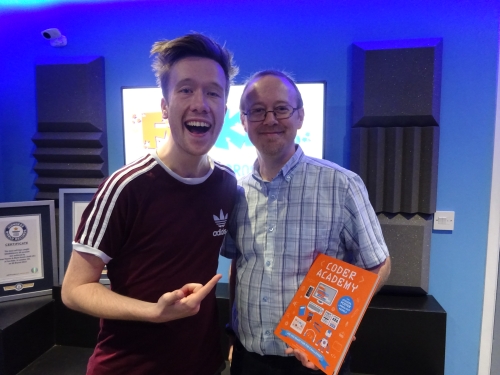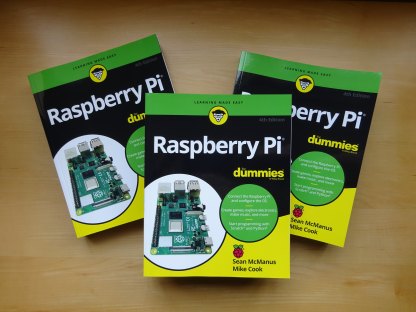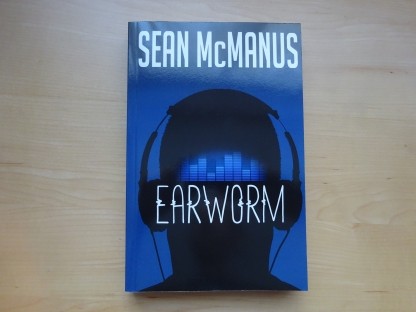
100 Top Tips: Microsoft Excel
Power up your Microsoft Excel skills with this powerful pocket-sized book of tips that will save you time and help you learn more from your spreadsheets.
27 November 2017
Flick, from Pi Supply, is a series of add-ons for the Raspberry Pi that you can use to detect taps, touches and finger movements. There are three devices in the series:

The Flick HAT for Raspberry Pi Zero, shown mounted on the Pi Zero
The board can be used to detect touches, taps and double taps. The ability to detect taps in five positions (north, south, east, west, centre) means it can be used as a simple five-button interface. It can also detect airwheel gestures (spinning your finger above the board) and the finger position above the board, including height. In my experience, the device can detect heights of up to about 7cm or 8cm above the board. Height detection still works through the case (there's a set of cases available to compliment the device), although the contact gestures (tap and touch) don't work when the device is in the case.
The Flick can also be used to detect flick gestures (hence the name!), swiping across the board from top to bottom or left to right (or in the other directions). This seems to work at a slightly lower height than the maximum height for finger position detection, based on my setup.
There are lots of potential applications for the Flick. The swiping gesture lends itself well to scrolling through options, and the airwheel could be used as a control for volume or similar parameters. The Pi Zero form factor could be used to make a remote control for a robot or other device. The first thing anyone thinks of is probably a theremin, but that remains a cool project and the Flick could be a nice way to add one discreetly to an existing object. Robot projects could use Flick to add the ability to detect touch. One of the endearing things about the commercial Pepper robot is that it responds when you stroke its head, and that kind of feature could be easily implemented using the Flick.
The most promising format is the Flick Large, because it could give you greater freedom for expressive movements, and so open up new creative possibilities. There's lots of potential in creating robot control panels by putting a decorated sheet of paper in front of the Flick Large, indicating where the virtual controls are for tapping or hovering over. If it works through your desk, the Flick Large could be used to add an invisible touch interface to your furniture. Pi Supply has thought of this and designed a case that enables it to be mounted under the desk in this way.
A Python API is in development, and this will be a big help. The flick-demo program is good for testing the Flick and provides some hackable code, but a few "hello world" examples and a documented API would make it more accessible and easier to build into projects. Here's my "hello world" program for position detection, based on stripping down the flick-demo program:
#!/usr/bin/env python
import flicklib
import time
import os
x_pos, y_pos, z_pos = 0, 0, 0
@flicklib.move()
def move(x, y, z):
global x_pos, y_pos, z_pos
x_pos = x
y_pos = y
z_pos = z
while True:
os.system('clear')
print("X:", x_pos)
print("Y:", y_pos)
print("Z:", z_pos)
time.sleep(0.25)
If you're looking to add gesture controls to your projects, or are interested in innovative new interfaces, Flick can be a great addition to your Raspberry Pi. Find out more about the Flick family at the Pi Supply website here. Thanks to Aaron, Francesco and John at Pi Supply for their help with this review.
Permanent link for this post | Blog Home | Website Home | Email feedback
15 November 2017
I am delighted to say that my book Super Skills: How to Code has been shortlisted for the ALCS 2017 Educational Writers’ Award. The book was illustrated by Venitia Dean and published by QED Publishing/Quarto.
Each chapter covers a different super skill in coding, using Scratch to make interactive programs and HTML for website design. The book includes one of my favourite Scratch games of those I've created, a platform game called Treetop Catnap.
The judges said: "Providing a lively way into an exciting new subject for all age groups, this book approaches complex ideas with both humour, and beautiful clarity. Full of handy tips and easy-to-understand instructions, it succeeds in making coding a fun activity for both boys and girls."
The other shortlisted entries are:
The winner will be announced at the All Party Writers Group (APWG) Winter Reception at the House of Commons on Tuesday 5th December.
I'd like to thank the team at QED and illustrator Venitia Dean for all their great work on How to Code, and the judging panel and organisers for reviewing and shortlisting the book. You can find out more about How to Code here, and you can play Treetop Catnap below if you have a compatible browser (click flag to start; cursor keys move, space jumps):
[UPDATE: Congratulations to Piotr Socha, Wojciech Grajkowski and Agnes Monod-Gayraud on winning with The Book of Bees! Many thanks to ALCS, the Society of Authors and the APWG for a lovely evening on the Terrace at the House of Commons, and for shortlisting How to Code for the award.]
Permanent link for this post | Blog Home | Website Home | Email feedback
12 November 2017
Last week I dropped in to the London studio of Fun Kids to be interviewed for the Science Weekly podcast. Host Dan asked me about computer code, where it comes from, and how computer languages work. It was a lot of fun taking part in the interview, and I would like to thank host Dan and producer Imogen for having me along. As always with these things, I thought of better answers to some of the questions on the tube home!

Dan and Sean in the studio
The interview was recorded to coincide with the publication of Coder Academy, which is out now and provides an introduction to Scratch programming and simple web design. The book is aimed at children aged 7-10 years old, and includes lots of interactive activities on the page. You can take Scratch further with Scratch Programming in Easy Steps and Cool Scratch Projects in Easy Steps. Follow those links to get free chapters and bonus content.
You can hear the podcast using the player below. For more episodes, or to find a link to play this one in your favourite player, check out the Fun Kids Science Weekly here.
Permanent link for this post | Blog Home | Website Home | Email feedback
© Sean McManus. All rights reserved.
Visit www.sean.co.uk for free chapters from Sean's coding books (including Mission Python, Scratch Programming in Easy Steps and Coder Academy) and more!

Power up your Microsoft Excel skills with this powerful pocket-sized book of tips that will save you time and help you learn more from your spreadsheets.

This book, now fully updated for Scratch 3, will take you from the basics of the Scratch language into the depths of its more advanced features. A great way to start programming.

Code a space adventure game in this Python programming book published by No Starch Press.

Discover how to make 3D games, create mazes, build a drum machine, make a game with cartoon animals and more!

Set up your Raspberry Pi, then learn how to use the Linux command line, Scratch, Python, Sonic Pi, Minecraft and electronics projects with it.

In this entertaining techno-thriller, Sean McManus takes a slice through the music industry: from the boardroom to the stage; from the studio to the record fair.